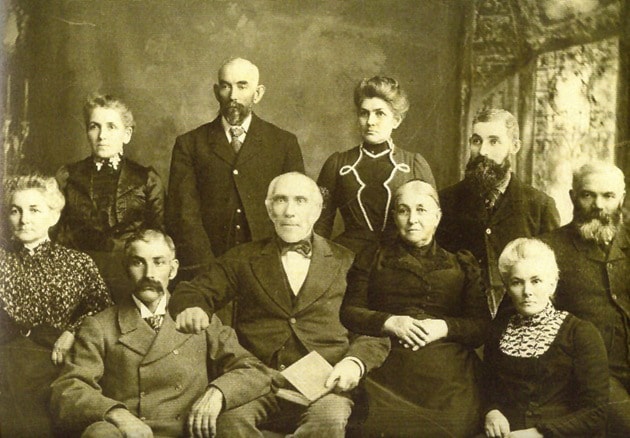Three weeks ago I received a phone call from George McCleary, Ontario descendant of Castlegar pioneer farmer and ferryman Albert McCleary. He called to inform me he is publishing a book on the McCleary clan, in which Albert’s story will play a significant part. He also requested proofs of the signs I had developed, which present that history locally. Best of all, he promised me a complimentary copy in appreciation of my efforts.
George and his wife Anne visited Castlegar in April 2004, and were treated royally by Mayor O’Connor. The visit was covered in both newspapers and on the local radio. A memorable supper at Gabriel’s Restaurant followed, hosted by the mayor and city administrator Jim Gustafson.
For me, the event represented a validation of my efforts to develop a network of environment-friendly walking trails, designed to serve also as conduits in time, and dedicated to the contemplative walker. I believed that such trails could be vehicles for showcasing our past, as well as tools for filling in gaps in our cultural tapestry. The McCleary connection was the first to provide insights into the life of an important personality.
The McClearys first approached me when George’s nephew Rob saw a reference to Albert in my website article on Sproat’s Landing. He wondered if his great uncle Albert, who in family lore had an argument with his father John and left the farm to experience life on the western frontier from Mexico to Yukon, was indeed the same Albert who reappears here as the first settler in Castlegar.
The family sent me all the documents at their disposal, and with the aid of the federal census for 1891 I was able to match the various parameters of the two Alberts, and thus determine they were indeed the same person. What was once a poorly known figure took on a new clarity.
The McClearys were a farming family of Irish descent, with American blood added when John married Caroline Spencer. Ten children were born, of whom Albert was the second to arrive. He had three brothers and six sisters, two of whom died in infancy. Samuel was an older brother, John was younger, and Robert George was the youngest. Albert and John remained bachelors and left no progeny.
In 1891 Albert returned to the place of his birth for the first time, as news caught up with him that his father had died in 1885. Albert had not kept in touch, and John’s wishes of finding a letter from his wandering son in the mailbox were not fulfilled. In returning, Albert severed his connections with Castlegar by selling his 320 acre pre-emption to Edward Mahon, who would plan a strategically located city for the land at the confluence.
Albert did not stay at the Warkworth farm for long, as the yearning for adventure was unshakable. He returned to the BC interior, devoting much of his time to prospecting, and eventually settling into an easier life as a railway watchman. That chapter closed when he returned home again so he could spend his last days in the comfort of the family circle. He died on Nov. 29, 1921 during surgery for what turned out to be advanced cancer.
After the death of his mother in 1903 the property was divided and the portion with the house on it passed into the hands of John, who managed the farm until he died in 1974. Three years previously, the old house had been bought by Edwin, the son of Robert George. The property is now occupied by Edwin’s son, George.
The McCleary saga has another connection to Castlegar. Our well-respected barber, Glen Carew, grew up only a couple of kilometers from the McCleary farm, and he knows the family well. A couple of years after the initial visit, George’s brother Murray came to Castlegar to look around for Albert’s footsteps, and — as I was away — sought out the Carew brothers, Glen and Martin, to help him find the McCleary sign on the Millennium Walkway. Glen also has a penchant for local history.
When he moved to Castlegar from Trail, Glen bought the old Tom Bloomer house, which had by then been relocated from its original location in what is now Fourth Street Mall to a spot on 7th Ave., across from St. Rita’s Parish Hall. He renovated the building while he lived there.
Needless to say, I am eagerly awaiting George’s book as I am sure there is a lot more to be learned about the pioneering Ontario family and their wayward son.
Walter Volovsek’s website can be found at trailsintime.org
Below: Walter Volovsek, then-Castlegar Mayor Mike O’Connor, and George and Anne McCleary are seen in April 2004 standing in front of the Millennium Trail sign that acknowledged George's ancestor, Castlegar pioneer and ferryman Albert McCleary. (Walter Volovsek collection)

Previous installments in this series
Lilette Mahon: A mentor’s gift
Edward Mahon: Searching for a legacy
Edward Mahon: A stimulating childhood
Intrigues: Castlegar’s lacklustre childhood
Perceptions: Adrift on the River of Life
Local history interwoven with rivers
Drawn into the currents of time
